What Is the Centro Nacional De Artes Populares Y Artesanãƒâas?
San Juan
(sahn HWAHN)

San Juan, the capital of Puerto Rico is the oldest metropolis on U.s.a. territory (St. Augustine, Florida the oldest city in the continental). Founded in 1521 past Juan Ponce de León, who named information technology City of Puerto Rico ("Rich Port").
The history of San Juan begins a logn fourth dimension before its official foundation, in 1493, during his second voyage, Christopher Columbus landed in Puerto Rico. He named the island "San Juan Bautista", in honor of John the Baptist. Only was not until 1508, that the Spanish government appointed Juan Ponce de León as the beginning governor of the island. He founded the original settlement in Caparra, now known as Pueblo Viejo, behind the about land-locked harbor just to the west of the present metropolitan area and the metropolis apace became Kingdom of spain's most important military outpost in the Caribbean.
A year later, the original settlement was relocated to a nearby coastal islet (to the site of what is at present called Old San Juan) and named Puerto Rico (Rich Port). Sometime during the 1520s, confusion over the names led to a switch, the island took the proper name of Puerto Rico and the town became San Juan.
Today, San Juan is known as "La Ciudad Amurallada" (the walled city) and is one of the biggest and best natural harbors in the Caribbean and is the 2nd oldest European-founded city in the Americas (after Santo Domingo, which was officially founded on August v, 1498.)

| State Area: | 47.five sq mi (122 sq km) |
| Water Expanse: | 75.four sq km (29.xi sq mi) |
| Population: | 420,326 (est. July i, 2009) |
| Density: | 2,110 per sq km (five,465 per sq mi) (est. 2009) |
| Housing Units: | 182,101 (2000) |
| Housing Density: | 3,808.4 (2000) |
| Per Capita Income: | $12,437 (2000) |
| Coordinates: | Latitude 18°29'00" Due north Longitude 66°08'00" W |
| Goose egg Codes: | 00901, 00902, 00906, 00907, 00908, 00909, 00910-00917, 00919, 00920-00929, 00930, 00931, 00933, 00934, 00936, 00940 |
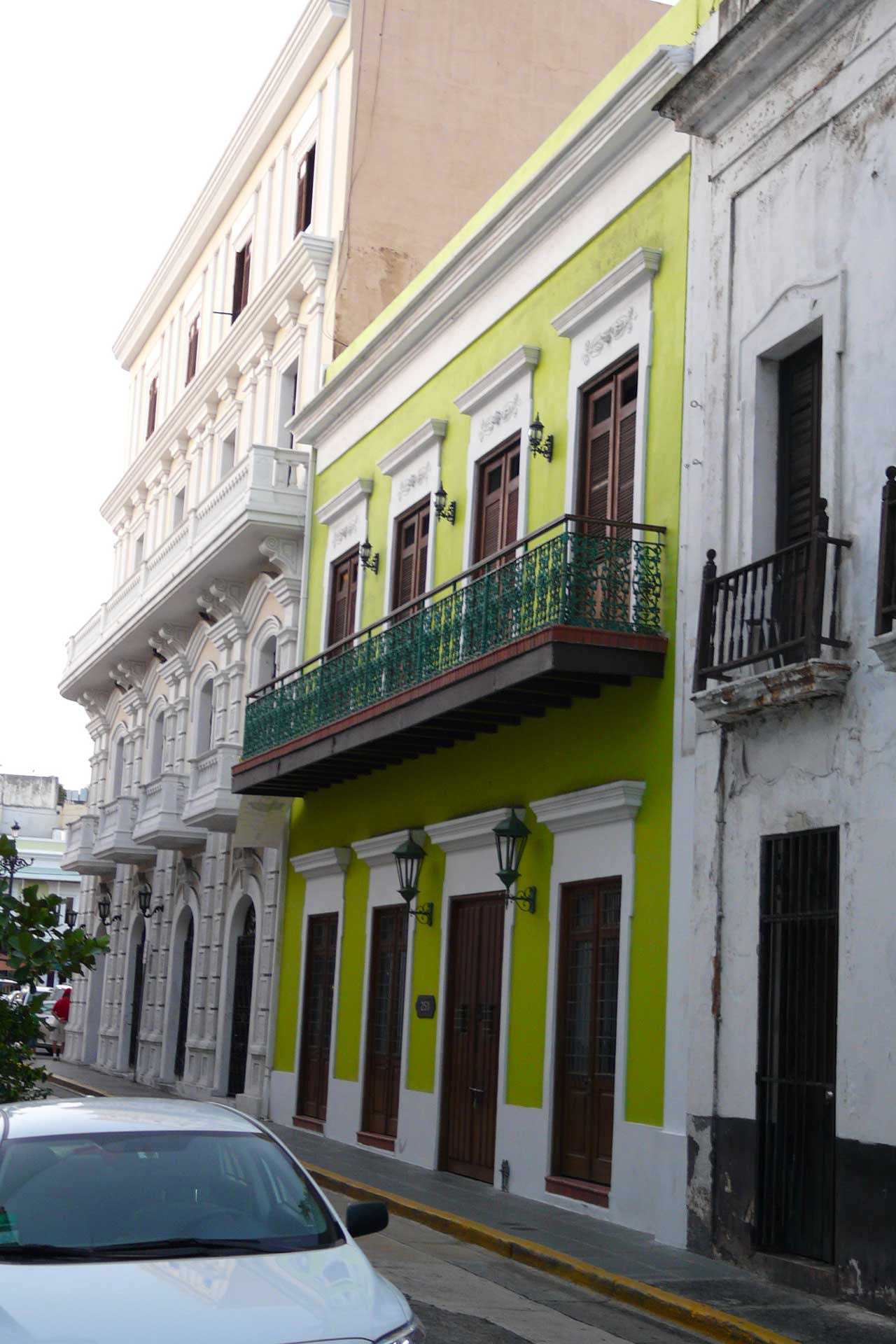
San Juan is located in the Northern Littoral Plains region in the karst zone, north of Aguas Buenas and Caguas; east of Bayamón; and westward of Carolina and Trujillo Alto.
The metropolitan area known as San Juan has 3 distinct areas: Onetime San Juan, the Embankment & Resort surface area, and other outlying communities, the about important: Río Piedras, Hato Rey, Puerta de Tierra, and Santurce. Río Piedras was founded in 1714 but became incorporated into San Juan in 1951.
During the early on 16th century, San Juan was the point of departure of Castilian expeditions to charter or settle unknown parts of the New World. Its fortifications repulsed the English navigator Sir Francis Drake in 1595, besides as later attacks.
In the 20th century the metropolis expanded across its walled confines, known every bit Quondam San Juan, to comprise suburban Miramar, Santurce, Condado, Hato Rey and Río Piedras.
San Juan is the largest processing center of the isle, the metropolitan area has facilities for petroleum and carbohydrate refining, brewing and distilling and produces cement, pharmaceuticals, metal products wearable, and tobacco. The port is i of the busiest in the Caribbean area. San Juan is the country's financial capital, and many U.S. banks and corporations maintain offices or distributing centers there. San Juan is center of Caribbean area shipping and is the 2nd largest sea port in the expanse (after New York City).
Anthem: En Mi Viejo San Juan
Wards: Caimito, Cupey, Hato Rey, Monacillos, Old San Juan, Puerto Nuevo, Quebrada Arenas, Río Piedras, Santurce, Sabana Llana and Tortugo.
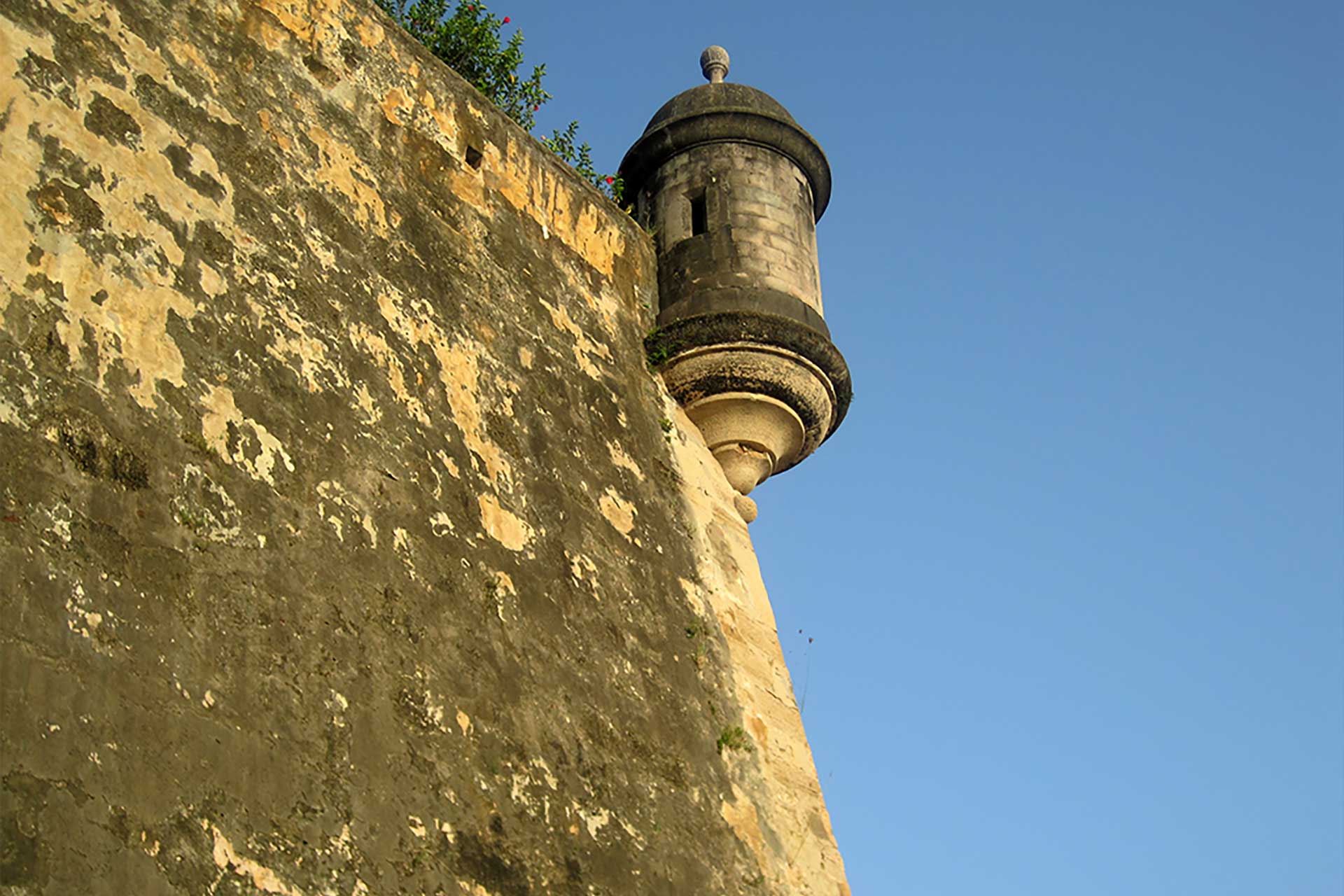
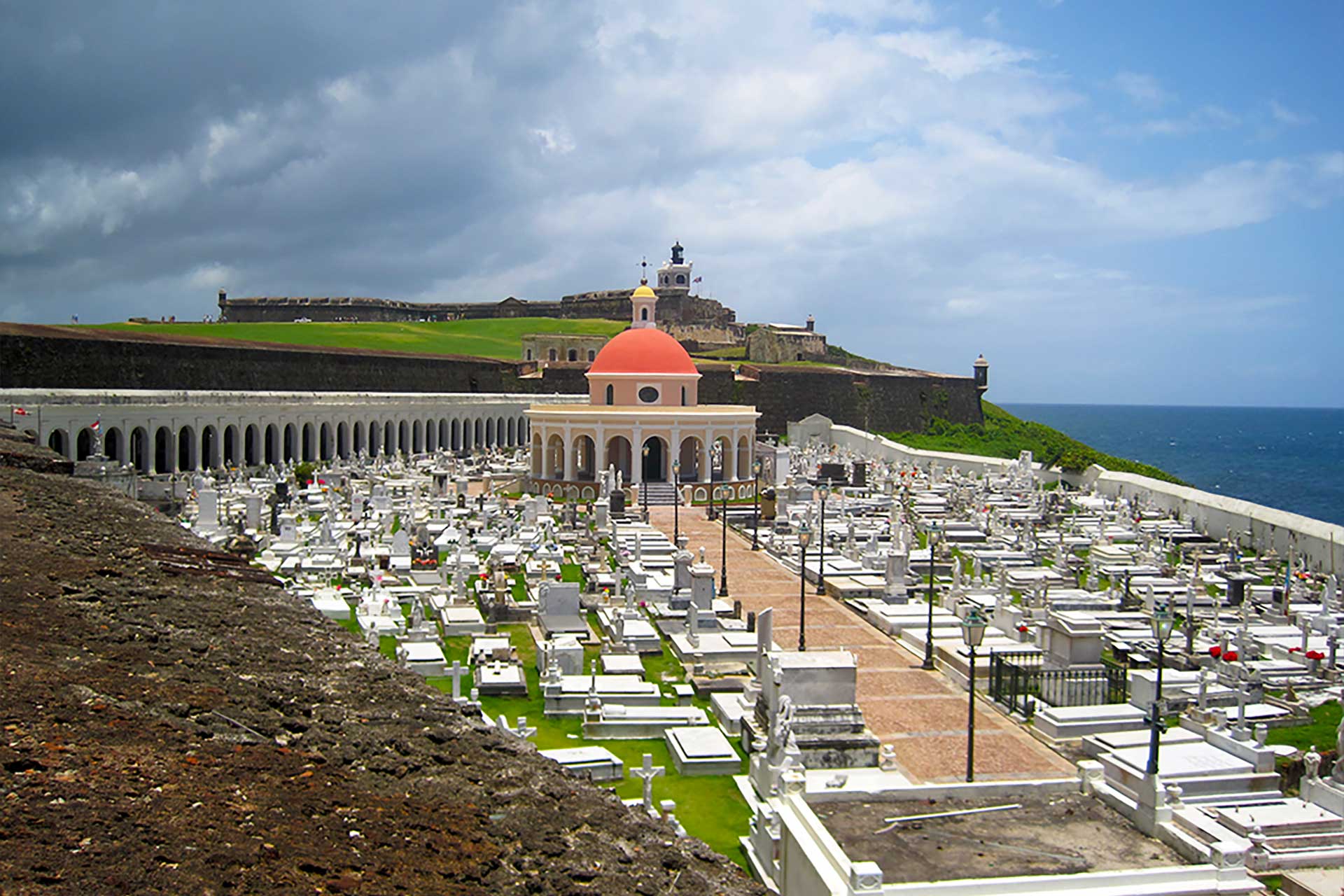
Points of Interest
One-time San Juan
This is a 465-year-old neighborhood originally conceived as a armed services stronghold. Its 7-foursquare-block area has evolved into a charming residential and commercial district. The streets here are paved with cobbles of adoquine, a blue stone bandage from furnace slag; they were brought over a ballast on Castilian ships and time and wet have lent them their characteristic colour. The city includes more than than 400 carefully restored 16th- and 17th-century Spanish colonial buildings. The Old San Juan attracts many tourists, who as well enjoy the gambling casinos, fine beaches, and tropical climate. More tourists visit San Juan each twelvemonth than any other spot in the Caribbean area. A leisurely foot tour is appropriate for those who really want to experience this fleck of the Sometime World, especially given the narrow, steep streets and frequently heavy traffic. To really exercise justice to these wonderful old sites, you'll need two mornings or a full day.
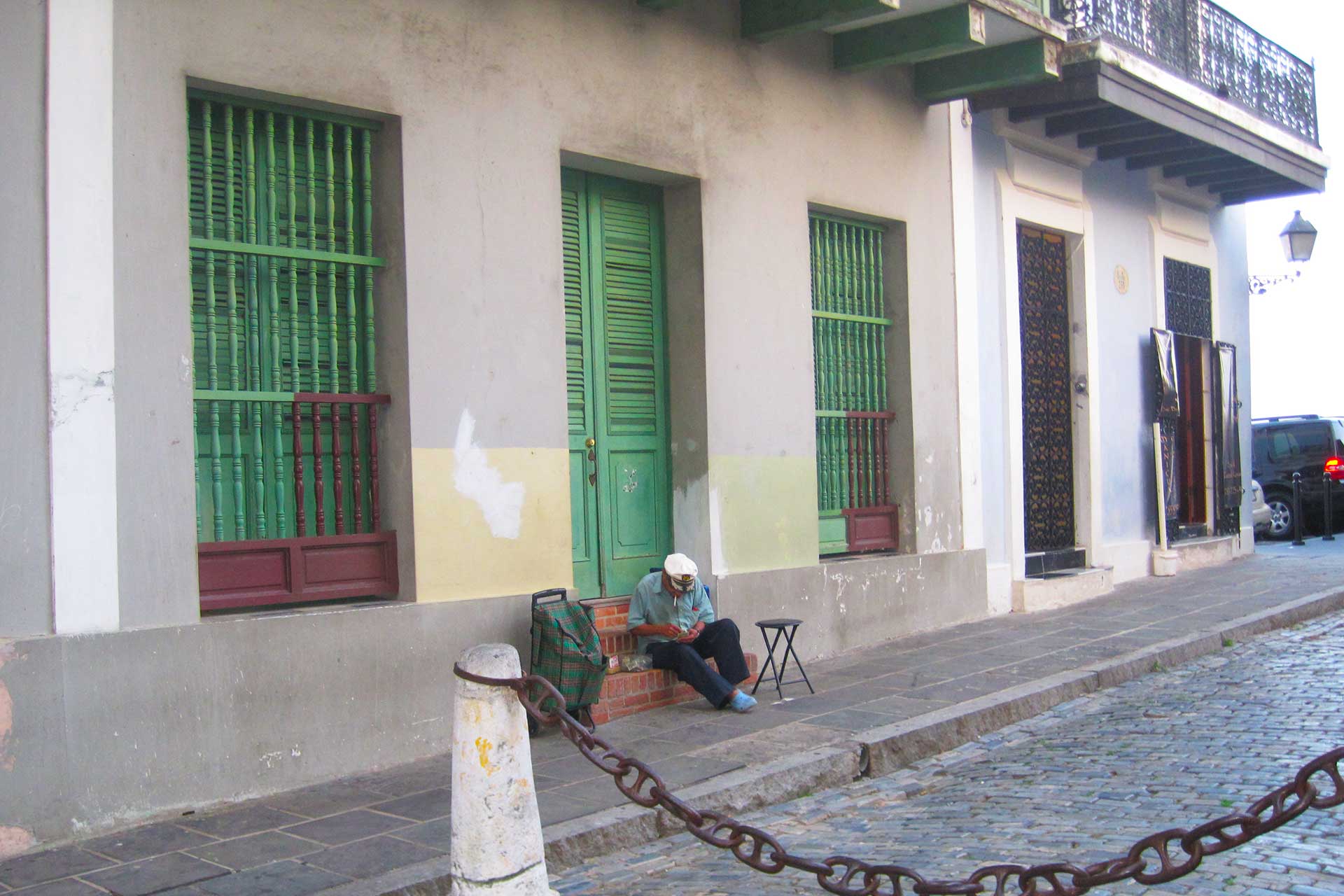 Quondam San Juan has several plazas: Plaza de San José is a favorite meeting place for immature and old akin. At its centre stands the bronze statue of Ponce de León, fabricated from a British cannons captured in during Sir Ralph Abercromby'due south attack 1797. The plaza is skirted past a number of historic buildings.
Quondam San Juan has several plazas: Plaza de San José is a favorite meeting place for immature and old akin. At its centre stands the bronze statue of Ponce de León, fabricated from a British cannons captured in during Sir Ralph Abercromby'due south attack 1797. The plaza is skirted past a number of historic buildings.
Abutting Plaza San José is the Plaza del Quinto Centenario (Quincentennial Foursquare), opened in October 12, 1992. This plaza is the cornerstone of Puerto Rico's commemoration of the 500th ceremony of Columbus' discovery of the New World, has a sculpture which rises 12 meters (twoscore anxiety). The monumental totemic sculpture in black granite and ceramics symbolizes the earthen and clay roots of American history and is the work of Jaime Suarez, one of Puerto Rico'due south foremost artists.
Plaza de Armas (arms square) is Quondam San Juan's main foursquare, on San José Street. Features iv statues representing the 4 seasons; all are over 100 years old. Information technology was carefully planned every bit the chief urban center square and has served equally a social coming together place for generations.
Plaza de Colón (Columbus square) was originally chosen St. James Square was renamed in 1893 to honour Christopher Columbus on the 400th anniversary of his discovery of Puerto Rico; bronze tablets at the pedestal of the Columbus statue record important episodes in the explorer's life.
Plazuela de la Rogativa (plaza of the procession) was congenital in 1971, features a mod sculpture depicting a procession of religious women commemorates an event that took place on the site in 1797. During the bound of that twelvemonth, a fleet of British ships led past nether Sir Ralph Ambercrombie sailed into San Juan Bay, meaning to launch an assault on the city and take control of the colony. When the attack was foiled, they undertook a naval occludent of San Juan, hoping to starve the residents into submission. As the towns people began to despair of whatever help from soldiers garrisoned in the inland towns, the governor ordered a rogativa, or divine entreaty, to inquire the saints for assistance. The women of the town formed a procession through the streets, conveying torches and ringing bells. The British, hearing the commotion and seeing the moving lights, decided that reinforcements had arrived and chop-chop sailed off.
The Plaza de Hostos is located well-nigh La Casita, features artisan displays, snack stands, and traditional piragüeros, who sell shaved ice topped with tropical fruit syrup.
Parks
The Parque de las Palomas (Pigeon Park) is located near the Paseo de la Princesa, next to Capilla del Cristo at the end of Cristo Street. This park overlooks the restored La Princesa Jail, now a government office with an attractive art gallery. Information technology is the perfect spot from which to enjoy a magnificent view of the harbor, city and mountains. It is also a great option for families with minor children, kids volition enjoy interacting with the local pigeons.
The Luis Muñoz Rivera Park is an spacious body of water side park with large trees, mural gardens and wide walks, located on Jesús T. Piñero Avenue. Open Tues-Sun nine:00am - five:00pm.
Other parks include: Martí Coll Linera Park, and Key Park (with facilities for jogging, baseball, calisthenics and tennis).
Forts
San Felipe del Morro was named in honor of King Phillip Two, commonly known every bit El Morro, is a 16th-century citadel. The word itself sounds powerful and this six-level fortress certainly is. The construction of the Castillo San Felipe del Morro began in 1540 when King Charles V of Espana authorized its construction, including the surrounding walls and completed in 1589. Most of the walls in the fort today were added afterward, in a menses of tremendous construction from the 1760's-1780's. Ascent 140 anxiety higher up the sea, its 18-foot-thick wall proved a formidable defense force. It roughshod only in one case, in 1598, to a land set on by the Earl of Cumberland's forces. The fort is a maze of tunnels, dungeons, billet, outposts and ramps. El Morro is studded with pocket-sized, circular sentry boxes chosen "garitas" that have get a national symbol. The views of San Juan Bay from El Morro are spectacular. The area was designated a National Historic Site in February, 1949 with 74 total acres. It has the stardom of being the largest fortification in the Caribbean. In 1992, the fortress was restored to its historical grade in honor of the 500th ceremony of the discovery of Puerto Rico by Christopher Columbus. El Morro Fortress is a National Celebrated Site administered past the National Park Service. The fort is open to the public everyday from 9am to 6pm except on Thanksgiving Day, Christmas Day and New year's day's Day. Admissions US$three adults, children under free, (787) 729-6960.
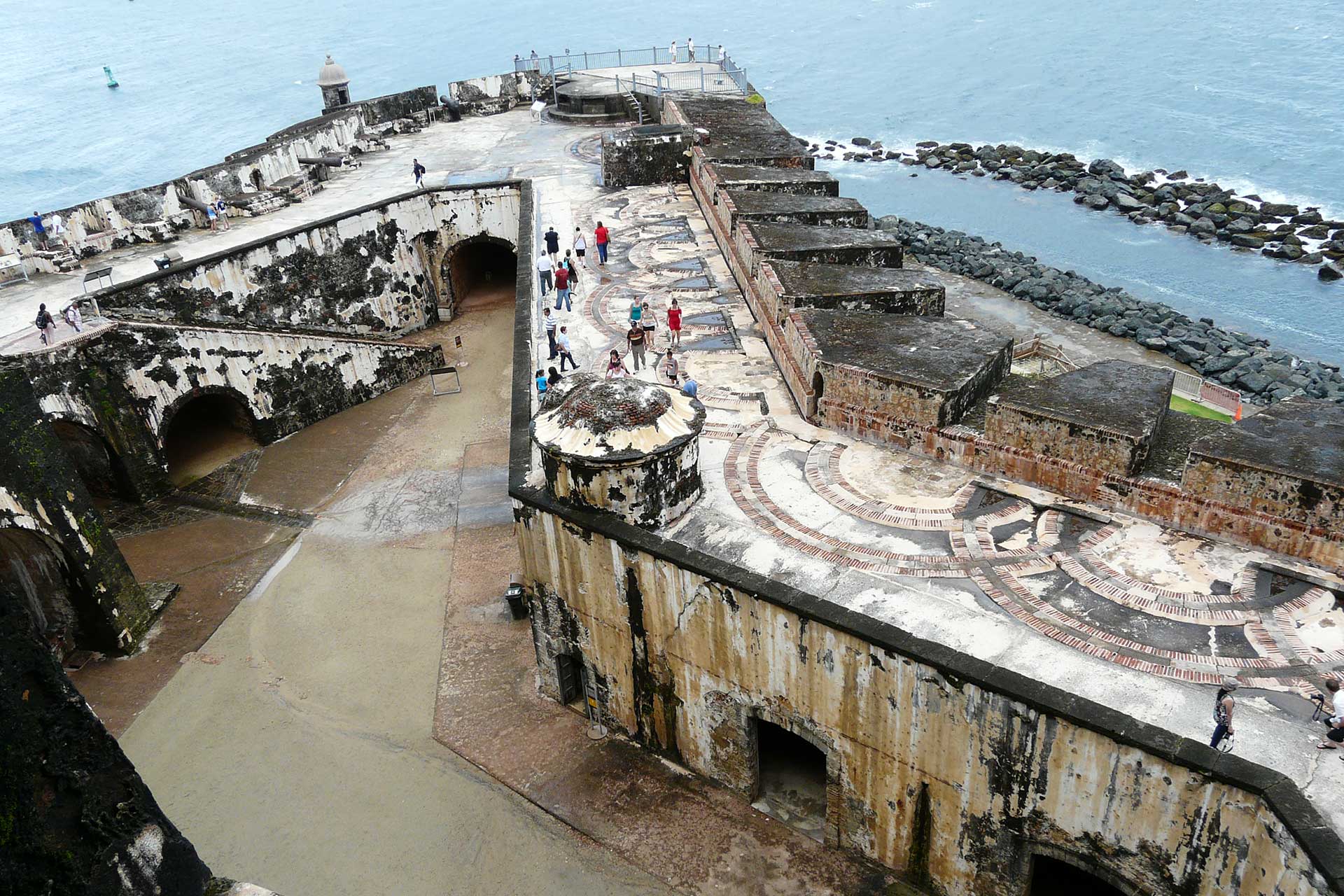

Castillo de San Cristóbal (San Cristóbal Fort) is El Morro'south partner in the city'southward defense. Built in 1634 (completed in 1771), was considered the Gibraltar of the West Indies. San Cristóbal was supported by a massive arrangement of outworks which provided defense in depth and is is i of the largest defenses always built in the Americas. Information technology rose 150 feet, covering 27 acres of land. Every bit if its size and meridian weren't sufficient to intimidate enemies, its intricate modular design was certain to foil them. A strategic masterpiece, it features v independent units, each connected past moat and tunnel; each fully self-sufficient should the others autumn. It'south a Earth Heritage and National Historic Site, administered by the U.S. National Park Service. Open daily from 9am to 6pm; (787) 729-6960.
The Fuerte San Gerónimo (San Gerónimo Fort) was built on the reverse end of San Juan to strengthen the city's defenses. The fort is located backside the Caribe Hilton Hotel, with pocket-size military museum in Puerta de Tierra.
The Santa Elena Battery building with a long chimney-topped bunker was the formal army storage area.
Buildings and Other Areas of Interest
La Fortaleza (also known as the Palacio de Santa Catalina began construction in 1533 and finalized the 25 of May of 1540, as a fortress. It was authorized to exist built by Charles V as a defense against Carib Indian attacks. The edifice was the offset of a series of armed services facilities synthetic in the Bay of San Juan, merely soon later on proved inadequate to guard the entrance to the harbor, and became the official Governor's Residence. The oldest governor's mansion notwithstanding used every bit such in Western Hemisphere and part of the old city'due south Earth Heritage Site. It has been occupied twice by invaders; by the Earl of Cumberland in 1598 and by the Dutch General Bowdoin Hendrick in 1625 when the building was damaged past fire. A major reconstruction was undertaken in 1640. In 1846, the building was remodeled and given a palatial aspect, uniting harmoniously 16th century military compages with the refinements of the 19th century. It has been the home of 170 governors of Puerto Rico and is the official residence of the electric current governor. Although the original structure (Deluxe Building surrounded past gardens) was very primitive, La Fortaleza has undergone numerous changes over its 300 years of history. Free tours are bachelor daily. Open Mon-Fri ix:00am-4:00pm; guided tours in English language on the hr, in Castilian every 30 minutes, (787) 721-7000 ext. 2358. Tours final about twoscore minutes. Admission to the official areas is non permitted.
The Alcaldia (San Juan's City Hall), started construction in 1602, completed in 1789. In the 1840'due south the building was heavily remodeled providing its present twenty-four hours facade intended by its builders to exist an exact replica of Madrid's. The building has a tourism information center and a small gallery for periodic exhibitions. Open Mon-Friday 8am - 4pm, except holidays. Complimentary admissions. (787) 724-7171 ext. 2391.
El Capitolio (Capitol Building of Puerto Rico) concord the offices of senators on one fly and those of representatives on the other, with galleries, friezes, mosaics and an impressive rotunda in which Puerto Rico's constitution is exhibited. Construction began in 1919 and the building was inaugurated on February xi, 1929. Guided tours past appointment only, Monday-Fri 9am-5pm, (787) 724-2030 ext. 2472, 2518.
The Catedral de San Juan (San Juan Cathedral) is the 2d oldest cathedral in the Western Hemisphere; structure began in 1521. The original church on these grounds had wooden walls and a thatched roof. It was destroyed by hurricane in 1526 (October quaternary), rebuilt in in 1540, looted in 1598, and damaged by another hurricane in 1615. The Cathedral as seen today is the effect of piece of work done in 1917, when major restorations were performed. This Cathedral is an authentic and rare New World example of medieval compages. The cathedral contains the marble tomb of the island's first governor Juan Ponce de León and the relic of San Pio, a Roman martyr. San Juan Cathedral still holds religious services on a regular schedule. Visitors can explore the cathedral from 8:30am to 4pm daily.
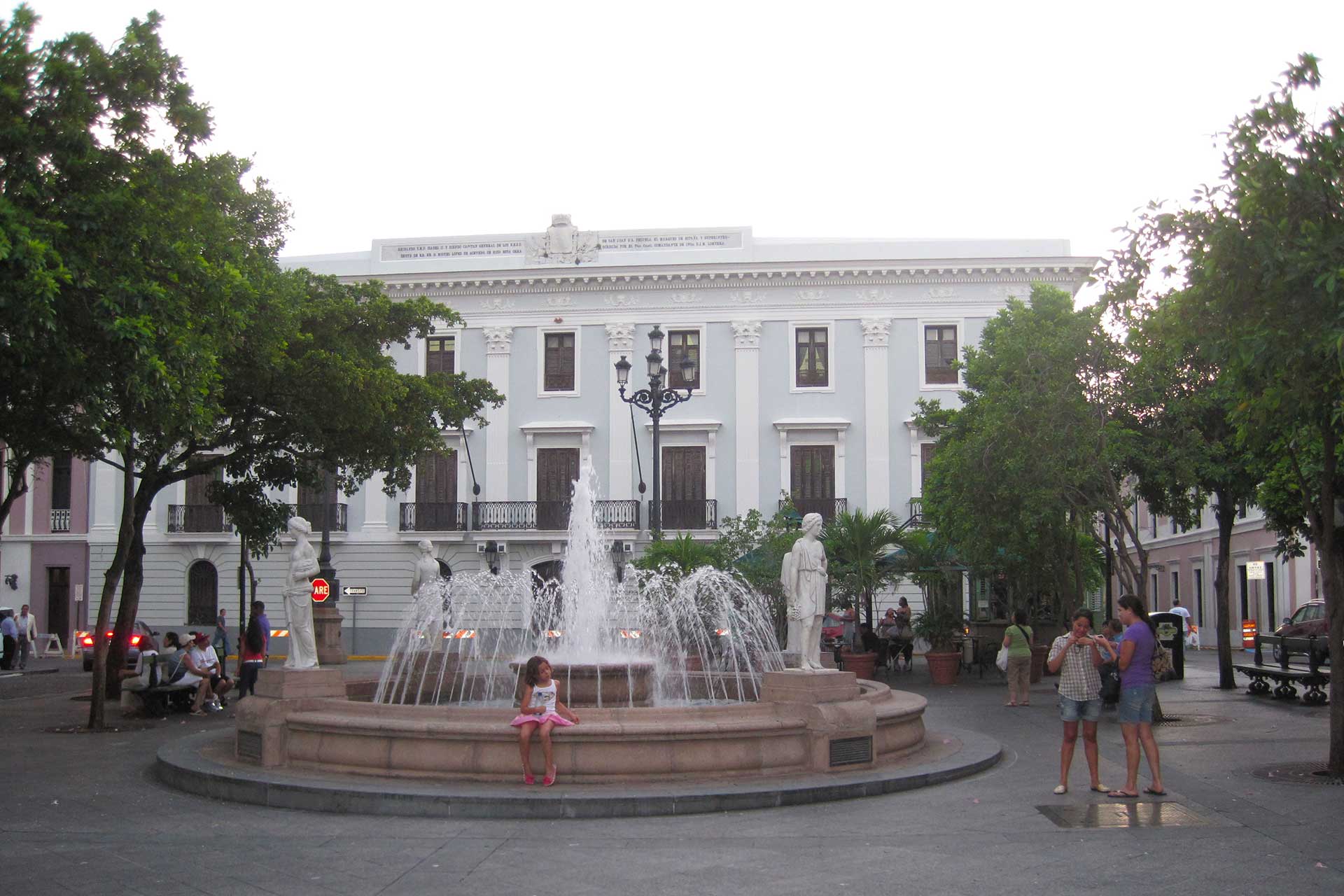 The Iglesia de San José (San José Church) began construction in 1523. Juan Ponce de León gave the state where the Church now stands. Originally called the Church and Monastery of Saint Thomas Aquinas, it was built by Dominican friars to serve as the monastery'due south church and chapel dedicated to Saint Thomas Aquinas. The section erected in 1532, the Main Chapel or Sanctuary, is an excellent example of 16th century Spanish Gothic compages. Ponce de León, was cached here for 300 years until his torso was moved to the San Juan Cathedral in 1913. This was the family church of Ponce de León'south descendants. Puerto Rican painter José Campeche, who contributed a great bargain to the cute churches of his island, is buried here. Open up Mon-Sabbatum 8:30am - 4pm, Dominicus mass at 12:00pm; (787) 725-7501.
The Iglesia de San José (San José Church) began construction in 1523. Juan Ponce de León gave the state where the Church now stands. Originally called the Church and Monastery of Saint Thomas Aquinas, it was built by Dominican friars to serve as the monastery'due south church and chapel dedicated to Saint Thomas Aquinas. The section erected in 1532, the Main Chapel or Sanctuary, is an excellent example of 16th century Spanish Gothic compages. Ponce de León, was cached here for 300 years until his torso was moved to the San Juan Cathedral in 1913. This was the family church of Ponce de León'south descendants. Puerto Rican painter José Campeche, who contributed a great bargain to the cute churches of his island, is buried here. Open up Mon-Sabbatum 8:30am - 4pm, Dominicus mass at 12:00pm; (787) 725-7501.
The Capilla del Cristo (Cristo Chapel) was congenital in the 18th century (1753). The stories surrounding the history of this pocket-sized chapel conflict wildly except on one bespeak: someone on horseback took a terrible spill off the cliffs at the end of Calle Cristo. Whether he lived, and the chapel was built to commemorate the miracle, or whether he died, and the chapel was to cake off the street and prevent such an accident from happening again, is the part of the story that is in dispute. The beautiful Campeche paintings and chantry inside tin be seen through the church'due south glass doors. Open Tues. 10am - 4pm.
The Casino of Puerto Rico was built only earlier Globe State of war I. The exterior - in the style of French mansions of the Louis XVI era, a copper copula, a large ballroom with elaborate plaster-work and a 12-foot chandelier distinguish this edifice.
The Teatro Tapia (Tapia Theater) was built in 1832 (financed past subscriptions and by taxes on breadstuff and imported liquor) and remodeled in 1949 and 1987 is one of the oldest theaters in the Western Hemisphere, was named for Alejandro Tapia y Rivera, the famous Puerto Rican playwright. Still hosts a multifariousness of amusement in the fine arts, plays, ballets and concerts. (787) 721-0169 or (787) 721-0180.
Centro de Bellas Artes (Fine Arts Center) opened its doors in 1981. The modern facilities offer concerts, plays, and opera. Information technology is the largest fine arts center in the Caribbean. Located on Ponce de León Artery, Santurce. Ticket windows are open daily from 10am to 6pm. and remain open up until 8:00 p.m. on operation nights. (787) 725-7353, (787) 725-7354 or (787) 725-7358.
The Escuela de Artes Plásticas (School of Fine Arts) was built by the Spanish colonial government in the 1800s. Previously the facilities served as an asylum for mental patients.
La Intendencia, formerly the Spanish colonial exchequer, a fine example of 19th century Puerto Rican compages, now houses Puerto Rico's Land Department. Open Mon-Fri 8am - 12pm, 1pm - iv:30pm, (787) 722-2121.
Museums
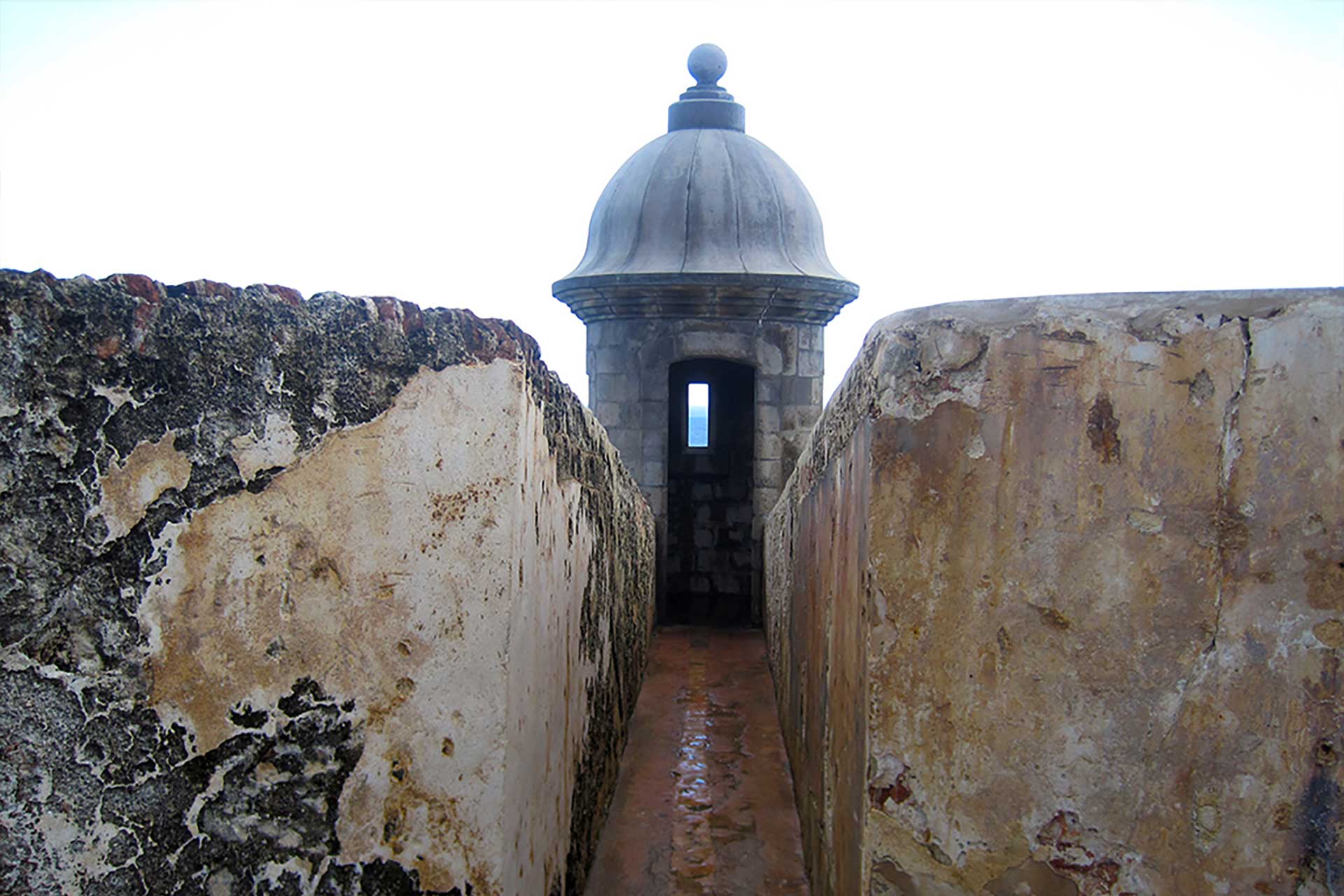
The San Juan Museum of Fine art and History was congenital in 1855 as a marketplace and restored in 1979 as a cultural center, showcases Puerto Rico art and music, including concerts and festivals. Open up Tuesday-Sun, 10am - 4pm, (787) 724-1875.
The Pablo Casals Museum is the Castilian master'due south legacy to the people of Puerto Rico. The museum drove includes manuscripts, memorabilia, photographs and a library of videotapes of Festival Casals concerts. Casals moved to Puerto Rico with his wife in the 1950s. He became the conductor of the Puerto Rico Symphony Orchestra and the president of the Conservatory of Music in Puerto Rico. The museum is open Tuesdays through Saturdays, 9:30am to v:30pm. Admissions The states$1 adults, The states$0.50 children, (787) 723-9185.
Casa de los Dos Zaguanes (House of the Two Foyers) is home of the Museo del Indio (Museum of the Indian) and features exhibits on the ethnic peoples of the Caribbean region, with exhibits, ceramics and archaeological digs. Located on San José Street, Old San Juan. Open Tues-Sat 9am - 4pm. Admission free, (787) 724-5477 or (787) 722-1709.
The Asilo de Beneficencia (Habitation for the Poor) was congenital 1840s for the indigent people. Today houses the Instituto de Cultura Puertorriqueña (Constitute of Puerto Rican Culture) offering exhibits galleries every mean solar day, features an impressive collection of artifacts from pre-European Puerto Rico, including pottery, rock tools and relics, and a recreation of a Taíno hamlet. Open Wed-Lord's day: 9am - 4:30pm; (787) 724-5949 or (787) 724-5477.
The Convento de los Dominicos (Dominican Convent) was built by Dominican friars in 1523, this edifice has served alternately as a convent, every bit a shelter against Carib Indian raids, and as the Caribbean headquarters of the U.Southward. Army. The convent contains a modest chapel museum. Open up Wed-Dominicus, 9am - 12pm, 1pm - four:30pm; cultural events are sometimes held in the patio, art exhibitions in the galleries, (787) 721-6866.
The Casa Blanca (White House) was built in 1521 and lived in by Ponce de León descendants for over 250 years. In 1779 information technology was taken over by the Castilian military, and so used later by the Us as a residence for armed services commanders (1898-1966). Today the mansion serves as National Historic Monument, housing a museum of 16th, 17th and 18th century history. Each room is busy in a style associated with a catamenia of the house'southward history. Casa Blanca is the oldest continuously occupied residence in the Western Hemisphere. Located on San Sebastián Street, Old San Juan, it houses a ethnographic museum and Taino (native Indian) artifacts. Open up to the public Tuesday through Sunday, 9am to noon, 1pm to 4:30pm. Guided tours Tuesday-Fri by engagement. Admission U.s.$ii adults, US$i children, (787) 724-4102.
The Casa Rosada (Pinkish House) was built in 1812 for the Spanish army. Today houses a government tourism office where you tin choice upwards brochures, maps and a gratuitous welcome cocktail fabricated with Puerto Rican rum.
La Casita (Fiddling House) is home of the Puerto Rico Tourism Co. Information Eye. Open up Mon-Wed from 8:30am to 8pm; Thu-Fri until five:30pm; and Sat-Sun, 9am to 8pm. (787) 722-1709.
The Casa de Ramón Power y Girault is the headquarters for the Conservation Trust of Puerto Rico, information technology also serves every bit a conservation resource center, in which critical environmental issues can be explored through an interactive multimedia exhibition entitled OJO-ISLA. Located at 155 Tetuán Street. Open Tuesday through Saturday, from 10am to 4:00pm, (787) 722-5834.
The Ruinas de Caparra (Caparra Ruins) are those of an ancient fort where Ponce de León founded the start settlement on the island in 1508. The Museum of the Conquest and Colonization of Puerto Rico at the ruins offers historical documents, exhibits and artifacts. Open daily 9am - 4pm, (787) 781-4795.
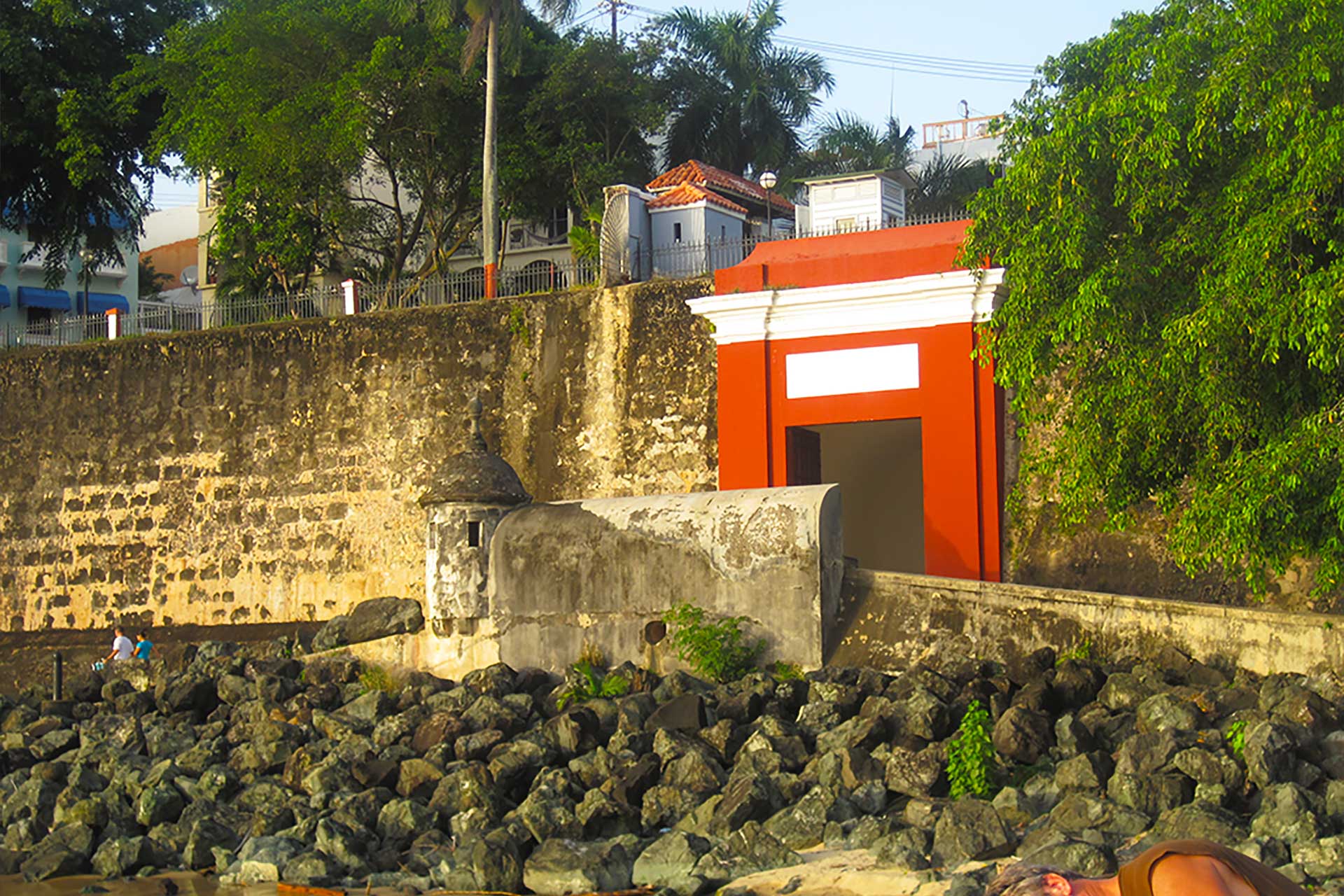
The Cuartel de Ballajá (Ballajá Barracks or Ballajá Quarters) housed Spanish soldiers and their families in the late 1800s, the building could adapt up to 1,000 people. The construction began in 1854, the main building was completed in 1863 and the chapel was added in 1881. Originally conceived equally a solution to the lodging needs of military personnel stationed in San Juan. The Cuartel de Ballajá is a three-story square building with large gates on ii ends, ample balconies, designed with a serial of arches and a protected key courtyard that served as a plaza and covers a reservoir. The Cuartel de Ballajá was the last and largest building synthetic by the Spaniards in the New World. Facilities included officer quarters, warehouses, kitchens, dining rooms, prison cells and stables. After the Castilian American State of war, the U.South. Army used Ballajá to house its Infantry division. In 1943, it was converted into a military machine medical facility, known every bit the Rodriguez Hospital and it was part of the Fort Brooke construction. Today it houses the Museum of the Americas (inaugurated October 12, 1992), located on its second flooring. The museum features irresolute exhibitions, arts and crafts exhibits and an impressive collection of Caribbean area and European American fine art and artifacts, nearly notably a various collection of carved santos (saints). Open Monday-Friday 10am - 4pm, Sat-Sunday 11am - 5pm, guided tours available weekdays x:30am, 11:30am, 12:30pm and 2pm. Admission complimentary, (787) 724-5052.
The Museo de Doña Fela (Felisa Rincón de Gautier Museum) is a colonial building that was once the home of Felisa Rincón de Gautier, the dynamic mayor of San Juan from 1946 to 1968. Memorabilia from the mayor'due south life, such equally plaques, correspondence and furniture, are on display. Open up Mon-Fri: 9am - 4pm; (787) 723-1897.
The Sacred Centre Academy with the Museum of Contemporary Puerto Rican Art (Tue-Sat ix:00-iv:00 p.m., Lord's day 11am - 5pm, (787) 268-0049.
Others museums include: The Archeologist Adolfo de Hostos Museum, and the Museum of the Seas.
Other Sights
San Juan Beach & Resort area. This area starts but outside of Old San Juan and includes the areas of Condado, Miramar, Ocean Park and Isla Verde. This is a expanse of fancy hotels, casinos, nightclubs, restaurants and chic boutiques.
Casa de los Contrafuertes (House of Buttresses) is a traditional Spanish-style home, which holds the Museum of Colonial Architecture and the Museum of the Puerto Rican Family. This is believed to be the oldest residence left in Old San Juan, dating back to the early 18th century. Open up Midweek-Lord's day, 9am - iv:30pm, (787) 724-5949. Also within Casa de los Contrafuertes you will observe the Museo de Nuestra Raíz Africana (African Heritage Museum), features African artifacts, including masks, maps, musical instruments, and paintings. Open Mon-Fri from 9:30am to 5pm, and Sabbatum from 10am to 5pm. Access gratis, (787) 724-4294 or (787) 724-4184.
Casa del Libro (Business firm of the Book) is an 18th-century house that is at present a volume museum belongings a rare collection of early manuscripts and books (well-nigh 5,000 works), some dating dorsum to the 15th century. Among the museum's most precious possessions are two royal mandates signed by Ferdinand and Isabella in 1493 apropos provisioning Columbus' fleet for his second voyage. Open Tues-Sat, except holidays, 11am - 4:30pm, (787) 723-0354.
The Puerta de San Juan (San Juan Gate) was built in the late 1700s, is one of six heavy wooden doors in the wall which for centuries were closed at sundown to cut off access to the urban center and protect the urban center from invaders. The wall is upward to twenty feet thick and upward to 40 feet alpine.
La Princesa (the princess), formerly the local San Juan penitentiary was built in 1837. It is elegantly landscaped with copse, a fountain, and a bronze sculpture. The building houses the Puerto Rico Tourism Company headquarters and rotating fine art exhibits. Open up Mon-Fri from 9am to 4pm. (787) 721-2400.
Paseo de la Princesa (promenade of the princess) is an elegantly landscaped walkway with copse, statues, benches, street lamps and kiosks. The promenade faces the bay.
Centro Nacional de Artes Populares y Artesanias (Popular Arts and Crafts Center) is role of the Puerto Rico Institute of Civilization, displays and offers for sale a verity of island crafts.
Academy of Puerto Rico which include campus, University Museum and the Jardin Botánico (Botanical Garden) is located in the Río Piedras. The Academy Museum has archaeological and historical exhibitions, and as well monthly art exhibitions. Open Monday-Fri, 9am - 11pm, weekends 9am - 3pm, (787) 764-0000, ext 2452. The Botanical Garden is a living laboratory of the native flora of Puerto Rico, with over 200 species of tropical and sub-tropical plants. In that location are many exotic plants, including Egyptian papyrus, red palm, pelting tree, candle tree, cantaloupe tree, the shapely Puerto Rican palm, and much more. Open daily 9am - iv:30pm, (787) 250-0000 ext 6580 or (787) 763-4408.
The YMCA was built in 1914 and today shares the building with the Olympic Committee. Its facilities include a patio and the Salón de los Presidentes, (a meeting room).
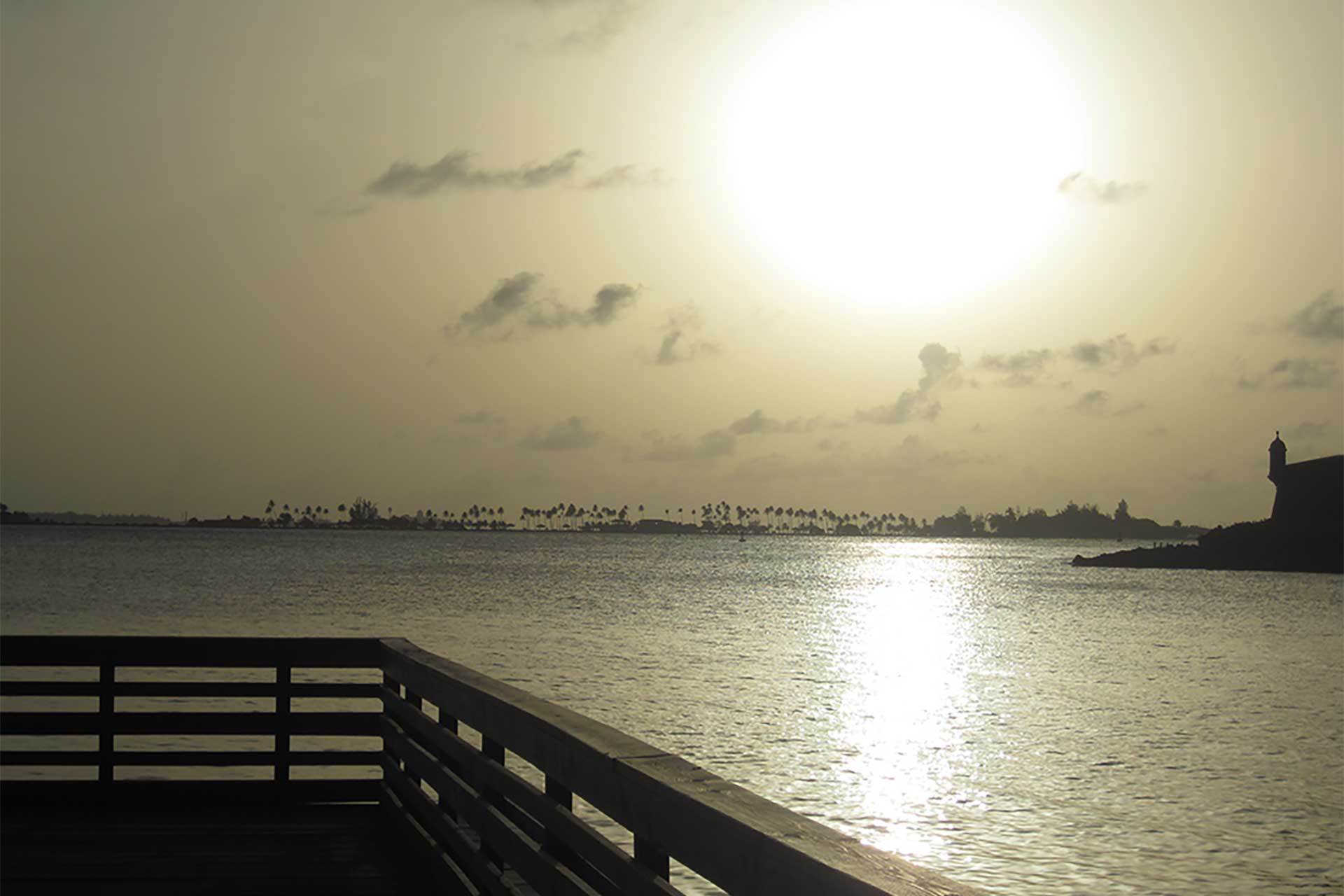
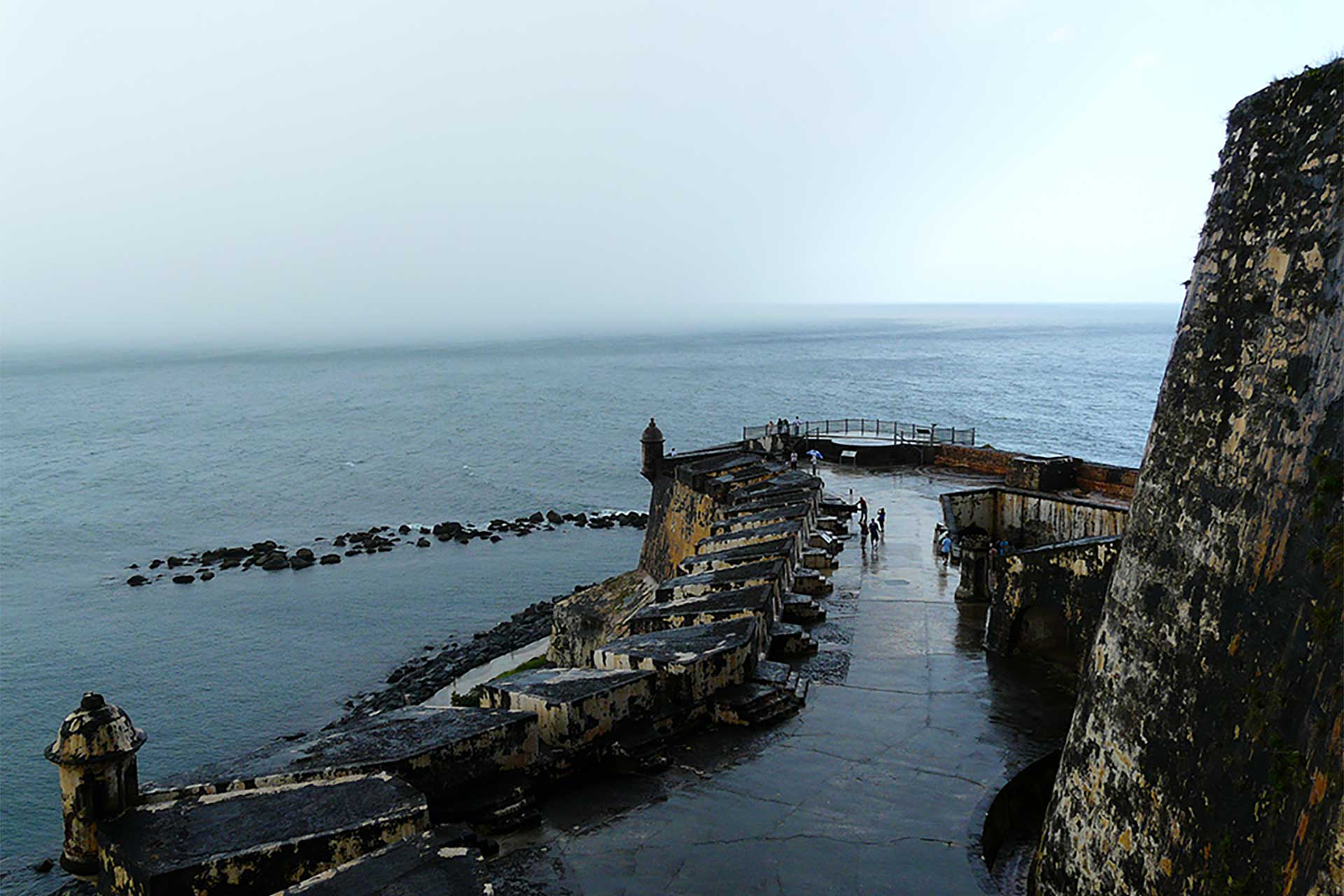
Cementerio de San Juan (San Juan Cemetery) is located between El Morro and the rocky cliffs in a higher place the Atlantic is considered one of the nigh picturesque of burial grounds anywhere. The cemetery is peculiarly noteworthy for its elaborate tombstones and the circular neoclassical chapel dedicated to Mary Magdalen. The most notable piece is a round, ruddy-domed chapel, which dates back to the late 19th century.
Piñones Reserve is a sub-tropical moist woods, includes mangroves, sea turtle nesting sites and beautiful beaches. No camping immune.
Colonial Adventures offers organized historical and art walking tours of Erstwhile San Juan, (787) 729-0114.
Ferry services are offered from San Juan to Cataño, beyond the San Juan Bay. Departs daily from Pier 2 in Sometime San Juan every half-60 minutes betwixt 6am and 10pm. For information call (787) 788-1155.
Tids and Bits
The manufacturing in San Juan includes clothing, sugar refining, cement, metallic goods, tobacco and brewing.
There are many well-known "sanjuaneros", among them: writer Manuel A. Alonso, journalist José Julián Acosta, comedian José Miguel Agrelot, former governor Luis Muñoz Marín (the isle's first elected governor), antropologist and archeologist Ricardo E. Alegría, writer and historian Tomas Blanco, player Raul Julía, golfer Juan "Chi-chi" Rodríguez, painter José Campeche, educator Rafael Cordero, former governor Pedro Rosello and musician and composer José Enrique Pedreira.
Interesting Facts
- When the United Nations designated earth-form historic sites such equally the Taj Mahal, it named six monuments in Quondam San Juan.
- San Juan is the largest home-based cruise port in the world. Twenty-viii vessels use San Juan every bit their dwelling house port, and each year new prowl ships either originate or call at the port.
Climate
San Juan enjoys year round summer temperatures, an average annual temperature of 79.nine°F (26.6°C). On average, the warmest month is June and the coolest month is February.
San Juan averages 50.75 inches (i,289 mm) of pelting per year. November is the boilerplate wettest month.
10 Twenty-four hours Forecast
Where to Stay?
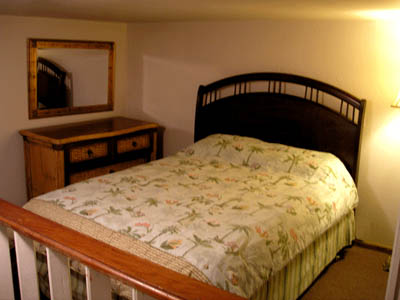
Oceana Hostal Playero
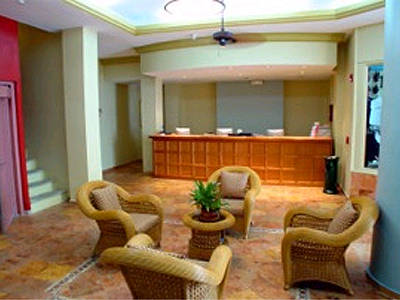
Howard Johnson Inn Plaza de Armas
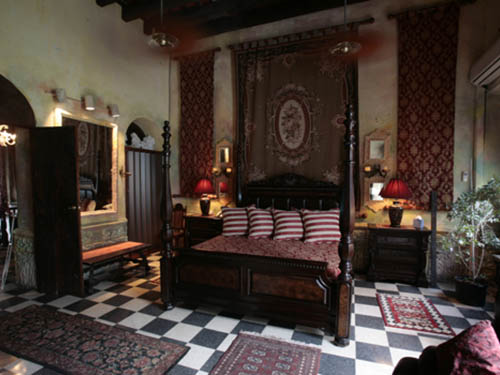
Gallery Inn
View All
Did You Know?
Puerto Rico does not apply Daylight Saving Fourth dimension.
0 Response to "What Is the Centro Nacional De Artes Populares Y Artesanãƒâas?"
Post a Comment